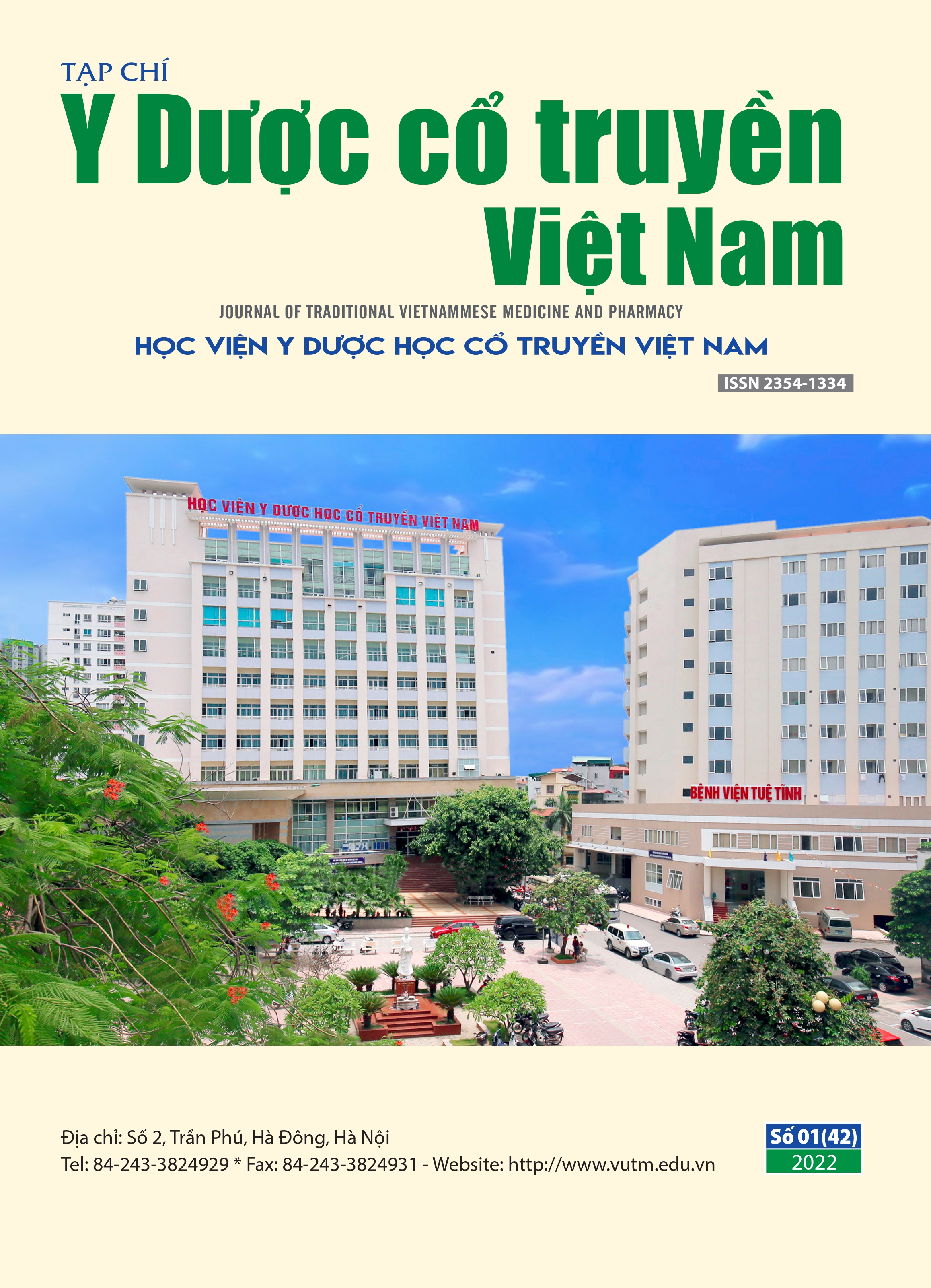Effects Of Propyl 10β - [(2'β-Hydroxy-3'-Imidazol)] Deoxoartemisinin (32) On Rabbits’ Hematopoietic Functions
Main Article Content
Abstract
This studywas conducted at the National Institute of Malariology, Parasitology and Entomology between February and May, 2021. The compound 10β-[(2'β-hydroxy-3'-imidazol) propyl] deoxoartemisinin (32) was treated orally in experimental rabbits in order to examine whether it affected rabbits’ hematopoietic functions or not.
Methods: The Vietnam Ministry of Health’s and OECD’s guidelines for sub-chronic toxicity testing were applied. The compound (32) was treated orally in two different groups with the dose regimens of 72 and 216 mg/kg/day x 28 consecutive days, respectively. A control group treated orally with solven was also tested simultaneously. Two milliliters of blood were pulled out from each rabbit’s ear vein on day 0 (before testing), day 14 (the middle of testing) and day 29 (after stopping taking 32). All of those blood samples were tested for hematological parameters including red blood cell, white blood cell, white blood cell formula, hematocrit, hemoglobin, platelet and mean corpuscular volume.
Results: Generally, most of the hematological parameters of the two (32)-treated groups were not significantly different from the control group. Besides, those indices on days 14 and 29 did not change significantly compared to before taking the (32) on day 0 (the p values > 0.05). Nevertheless, with the dose of 72 mg/kg/day, rabbits’ erythrocyte counts decreased significantly on day 14 comparing to that on day 0 (p < 0.05) and became in normal limits on day 29 (p > 0.05). In addition, in the group treated with 216 mg/kg/day, rabbits’ hematocrit indices increased significantly on day 14 comparing to that on day 0 (p < 0.05) and did not change significantly compared to that on day 29 (p > 0.05).
Conclusion: The compound (32) at the dose regimens of 72 and 216 mg/kg/day x 28 consecutive days did not affect rabbits’ hematopoietic functions.
Article Details
Keywords
10β-[(2'β-hydroxy-3'-imidazol) propyl] deoxoartemisinin (32), rabbit, hematopoietic function, hematological parameters, red blood cell, white blood cell, white blood cell formula, hematocrit, hemoglobin, platelet and mean corpuscular volume.
References
2. Nguyễn Thị Minh Thu (2008), Nghiên cứu tác dụng trên kí sinh trùng sốt rét và độc tính trên thực nghiệm của thuốc sốt rét phối hợp Dihydroartemisinin – Piperaquin do Việt Nam sản xuất, Luận án tiến sĩ Dược học - Viện Dược Liệu.
3. Nguyễn Thị Minh Thu, Ngô Việt Thành, Tạ Thị Tĩnh, Nguyễn Mạnh Hùng và cộng sự (2011), “Nghiên cứu hiệu lực in vitro của 5 dẫn xuất artemisinin và độc tính cấp của 10β-[(2’β-hidroXy-3’-imidazol) propyl] deoXoartemisinin”, Tạp chí Dược học, (số 428), tr.31-34.
4. Nguyễn Thị Minh Thu, Nguyễn Lương Hiếu (2020), “Tác dụng in vivo và độc tính cấp đường uống của 10β-[2’β-hidroXy-3’-imidazol) propyl] deoXoartemisinin (32)”, Tạp chí Y Dược cổ truyền Việt Nam, tập 7, (số 32), tr.35-45.
5. Trường Đại học Dược Hà Nội - Chương trình Phòng chống sốt rét Quốc gia (2016), Cẩm nang hướng dẫn sử dụng thuốc điều trị sốt rét, Nhà xuất bản Thanh Niên, Hà Nội.
6. Noedl H. et al. (2008), “Evidence of artemisinin-resistant aalaria in western Cambodia”, N Engl J Med, 359(24), pp. 2619-2620.
7. OECD (2008), “Repeated dose 28-oral toXicity study in rodents”, OECD guidelines for the testing of chemicals, No. 407.

